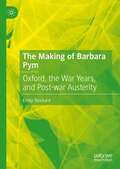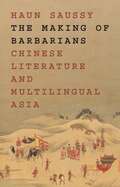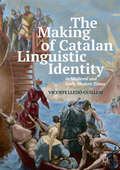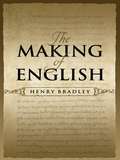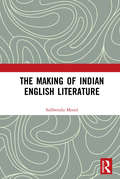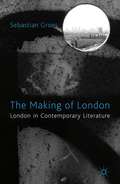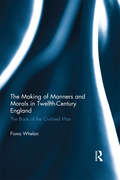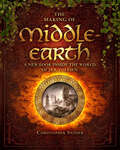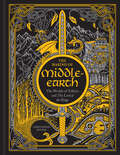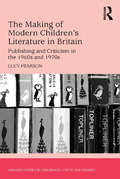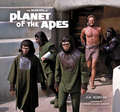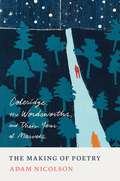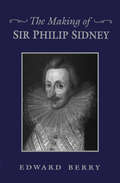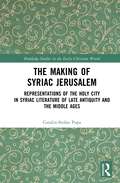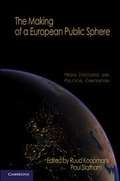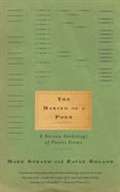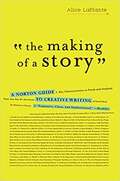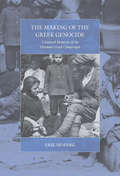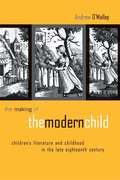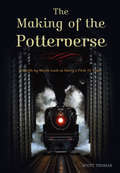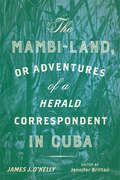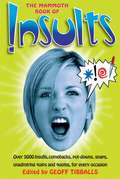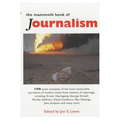- Table View
- List View
The Making of Barbara Pym: Oxford, the War Years, and Post-war Austerity
by Emily StockardThe Making of Barbara Pym offers new insights into Pym’s formative years as a writer, during which she honed a complex view of the necessity of change on individual and cultural levels. Supported by newly published archival material, this comprehensive study of Pym’s early work explores her personal and fictional pre-war and wartime writing, including unpublished and posthumously published works, before looking closely at Some Tame Gazelle and Excellent Women, published during Britain’s post-war austerity period. Of central importance is a new recognition of Pym’s use of social roles, particularly those of women, as proper avenues for change. The book traces how Pym came to devise characters whose individual development can be seen as analogous to or representative of larger cultural movements. Pym uses the spinster figure to embody the forward-looking cultural perspectives that she endorsed and then, finally, in Jane and Prudence, to figure the end of Britain’s austerity period.
The Making of Barbarians: Chinese Literature and Multilingual Asia (Translation/Transnation #58)
by Haun SaussyA groundbreaking account of translation and identity in the Chinese literary tradition before 1850—with important ramifications for todayDebates on the canon, multiculturalism, and world literature often take Eurocentrism as the target of their critique. But literature is a universe with many centers, and one of them is China. The Making of Barbarians offers an account of world literature in which China, as center, produces its own margins. Here Sinologist and comparatist Haun Saussy investigates the meanings of literary translation, adaptation, and appropriation on the boundaries of China long before it came into sustained contact with the West.When scholars talk about comparative literature in Asia, they tend to focus on translation between European languages and Chinese, Korean, and Japanese, as practiced since about 1900. In contrast, Saussy focuses on the period before 1850, when the translation of foreign works into Chinese was rare because Chinese literary tradition overshadowed those around it.The Making of Barbarians looks closely at literary works that were translated into Chinese from foreign languages or resulted from contact with alien peoples. The book explores why translation was such an undervalued practice in premodern China, and how this vast and prestigious culture dealt with those outside it before a new group of foreigners—Europeans—appeared on the horizon.
The Making of Catalan Linguistic Identity in Medieval and Early Modern Times
by Vicente Lledó-GuillemThe historical relationship between the Catalan and Occitan languages had a definitive impact on the linguistic identity of the powerful Crown of Aragon and the emergent Spanish Empire. Drawing upon a wealth of historical documents, linguistic treatises and literary texts, this book offers fresh insights into the political and cultural forces that shaped national identities in the Iberian Peninsula and, consequently, neighboring areas of the Mediterranean during the Middle Ages and the Early Modern Period. The innovative textual approach taken in these pages exposes the multifaceted ways in which the boundaries between the region’s most prestigious languages were contested, and demonstrates how linguistic identities were linked to ongoing struggles for political power. As the analysis reveals, the ideological construction of Occitan would play a crucial role in the construction of a unified Catalan, and Catalan would, in turn, give rise to a fervent debate around ‘Spanish’ language that has endured through the present day. This book will appeal to students and scholars of historical linguistics, sociolinguistics, Hispanic linguistics, Catalan language and linguistics, anthropological linguistics, Early Modern literature and culture, and the history of the Mediterranean.
The Making of English
by Henry BradleyThis etymological tour de force was written by a self-taught farmer's son who became a world-famous linguist and senior editor of the Oxford English Dictionary. By the time he was a teenager, Henry Bradley (1845-1923) had immersed himself in several classical languages. His achievements were ultimately recognized with honorary degrees from Oxford and Heidelberg, and fellowships at Magdalen College and the British Academy. This 1904 work represents the culmination of his philological career.Scholarly yet nontechnical, The Making of English explains in simple terms the relationships between English and other tongues--Greek, Latin, German, Spanish, and French. Topics include the similarities and differences between English and German, characteristics of Old English, and the composition, derivation, and root-creation involved in the process of the making of words. The author also discusses changes in meaning that occur over time, and profiles some historical figures who were influential in shaping the English language.
The Making of Indian English Literature
by Subhendu MundThe Making of Indian English Literature brings together seventeen well-researched essays of Subhendu Mund with a long introduction by the author historicising the development of the Indian writing in English while exploring its identity among the many appellations tagged to it. The volume demonstrates, contrary to popular perceptions, that before the official introduction of English education in India, Indians had already tried their hands in nearly all forms of literature: poetry, fiction, drama, essay, biography, autobiography, book review, literary criticism and travel writing. Besides translation activities, Indians had also started editing and publishing periodicals in English before 1835. Through archival research the author brings to discussion a number of unknown and less discussed texts which contributed to the development of the genre. The work includes exclusive essays on such early poets and writers as Kylas Chunder Dutt, Shoshee Chunder Dutt, Toru Dutt, Mirza Moorad Alee Beg, Krupabai Satthianadhan, Swami Vivekananda, H. Dutt, and Sita Chatterjee; and historiographical studies on the various aspects of the genre. The author also examines the strategies used by the early writers to indianise the western language and the form of the novel. The present volume also demonstrates how from the very beginning Indian writing in English had a subtle nationalist agenda and created a space for protest literature. The Making of Indian English Literature will prove an invaluable addition to the studies in Indian writing in English as a source of reference and motivation for further research. Please note: Taylor & Francis does not sell or distribute the Hardback in India, Pakistan, Nepal, Bhutan, Bangladesh and Sri Lanka.
The Making of Jane Austen
by Devoney LooserAn engaging account of how Jane Austen became a household name.Just how did Jane Austen become the celebrity author and the inspiration for generations of loyal fans she is today? Devoney Looser's The Making of Jane Austen turns to the people, performances, activism, and images that fostered Austen's early fame, laying the groundwork for the beloved author we think we know. Here are the Austen influencers, including her first English illustrator, the eccentric Ferdinand Pickering, whose sensational gothic images may be better understood through his brushes with bullying, bigamy, and an attempted matricide. The daring director-actress Rosina Filippi shaped Austen's reputation with her pioneering dramatizations, leading thousands of young women to ventriloquize Elizabeth Bennet's audacious lines before drawing room audiences. Even the supposedly staid history of Austen scholarship has its bizarre stories. The author of the first Jane Austen dissertation, student George Pellew, tragically died young, but he was believed by many, including his professor-mentor, to have come back from the dead.Looser shows how these figures and their Austen-inspired work transformed Austen's reputation, just as she profoundly shaped theirs. Through them, Looser describes the factors and influences that radically altered Austen's evolving image. Drawing from unexplored material, Looser examines how echoes of that work reverberate in our explanations of Austen's literary and cultural power. Whether you're a devoted Janeite or simply Jane-curious, The Making of Jane Austen will have you thinking about how a literary icon is made, transformed, and handed down from generation to generation.
The Making of London
by Sebastian GroesLondon has become the focus of a ferocious imaginative energy since the rise of Thatcher. The Making of London analyses the body of work by writers who have committed their writing to the many lives of a city undergoing complex transformations, tracing a major shift in the representation of the capital city.
The Making of Manners and Morals in Twelfth-Century England: The Book of the Civilised Man
by Fiona WhelanHow different are we from those in the past? Or, how different do we think we are from those in the past? Medieval people were more dirty and unhygienic than us – as novels, TV, and film would have us believe – but how much truth is there in this notion? This book seeks to challenge some of these preconceptions by examining medieval society through rules of conduct, and specifically through the lens of a medieval Latin text entitled The Book of the Civilised Man – or Urbanus magnus – which is attributed to Daniel of Beccles. Urbanus magnus is a twelfth-century poem of almost 3,000 lines which comprehensively surveys the day-to-day life of medieval society, including issues such as moral behaviour, friendship, marriage, hospitality, table manners, and diet. Currently, it is a neglected source for the social and cultural history of daily life in medieval England, but by incorporating modern ideas of disgust and taboo, and merging anthropology, sociology, and archaeology with history, this book aims to bring it to the fore, and to show that medieval people did have standards of behaviour. Although they may seem remote to modern ‘civilised’ people, there is both continuity and change in human behaviour throughout the centuries.
The Making of Middle-Earth: A New Look Inside the World of J. R. R. Tolkien
by Christopher A. SnyderThis study “adds an important voice to the growing body of Tolkien scholarship,” covering the author’s life, influences, and original mythology (The Boston Globe).J. R. R. Tolkien’s epic fantasy adventure, The Lord of the Rings, is universally regarded as one of history’s best-loved literary works. Now medieval scholar and Tolkien expert Christopher Snyder presents the most in-depth exploration yet of Tolkien’s source materials for Middle-earth—from the languages, poetry, and mythology of medieval Europe and ancient Greece to the halls of Oxford and the battlefields of World War I. Fueled by the author’s passion for all things Tolkien, this richly illustrated book also reveals the surprisingly pervasive influence of Tolkien’s timeless fantasies on modern culture.
The Making of Middle-earth: The Worlds of Tolkien and The Lord of the Rings
by Christopher A. SnyderThis volume is perhaps the most in-depth exploration ever undertaken of Tolkien's world. Accessible but authoritative, and fully illustrated, it is now being reissued with a stunning new cover treatment and updated commentary on new books, films, games, and shows. This book, originally published in 2013 and richly illustrated with photographs and artwork , was the first to connect all the threads of influence on Tolkien that infused his creation of Middle-earth—from the languages, poetry, and mythology of medieval Europe and ancient Greece and Rome to the halls of Oxford and the battlefields of World War I. Snyder examines the impact of these works on our modern culture, from 1960s counterculture to fantasy publishing, gaming, music, and beyond. The reissue has a gorgeous, updated cover design with a custom illustration on foil-stamped faux cloth and additional pages of material covering new developments.
The Making of Modern Children's Literature in Britain: Publishing and Criticism in the 1960s and 1970s (Studies in Childhood, 1700 to the Present)
by Lucy PearsonLucy Pearson’s lively and engaging book examines British children’s literature during the period widely regarded as a ’second golden age’. Drawing extensively on archival material, Pearson investigates the practical and ideological factors that shaped ideas of ’good’ children’s literature in Britain, with particular attention to children’s book publishing. Pearson begins with a critical overview of the discourse surrounding children’s literature during the 1960s and 1970s, summarizing the main critical debates in the context of the broader social conversation that took place around children and childhood. The contributions of publishing houses, large and small, to changing ideas about children’s literature become apparent as Pearson explores the careers of two enormously influential children’s editors: Kaye Webb of Puffin Books and Aidan Chambers of Topliner Macmillan. Brilliant as an innovator of highly successful marketing strategies, Webb played a key role in defining what were, in her words, ’the best in children’s books’, while Chambers’ work as an editor and critic illustrates the pioneering nature of children's publishing during this period. Pearson shows that social investment was a central factor in the formation of this golden age, and identifies its legacies in the modern publishing industry, both positive and negative.
The Making of Planet of the Apes
by Jonathan RinzlerFOREWORD BY FRASER HESTONIn celebration of the fiftieth anniversary of Planet of the Apes, the classic science-fiction film from 1968, The Making of Planet of the Apes tells the film and offers exclusive, never-before-seen photographs and concept art.Based on Pierre Boulle's novel La Planéte de singes, the original Planet of the Apes was one of the most celebrated films of the 1960s and beyond. Starring Hollywood icons Charlton Heston and Roddy McDowall, the movie struck a chord with the world and sparked a franchise that included eight sequels, two television series, and a long-running comic book. Now, five decades after its theatrical release, New York Times bestselling author J. W. Rinzler tells the thrilling story of this legendary Hollywood production—a film even Boulle thought would be impossible to make.With a foreword by Fraser Heston, Charlton Heston's son, The Making of Planet of the Apes is an entertaining, informative experience that will transport readers back to the strange alternate Earth ruled by apes, and bring to life memorable characters such as Cornelius, Dr. Zira, Dr. Zaius, and Taylor, the human astronaut whose time-traveling sparks an incredible adventure. Meticulously researched and designed to capture the look and atmosphere of the film, The Making of Planet of the Apes is also packed with a wealth of concept paintings, storyboards, and never-before-seen imagery—including rare journal pages and sketches from Charlton Heston's private collection—as well as color and black-and-white unit photography, posters, and more unique ephemera.Comprehensive in scope, The Making of Planet of the Apes is the definitive look at the original blockbuster film, a must-have for fans, film buffs, and collectors alike.
The Making of Poetry: Coleridge, the Wordsworths, and Their Year of Marvels
by Adam NicolsonBrimming with poetry, art, and nature writing—Wordsworth and Coleridge as you've never seen them beforeJune 1797 to September 1798 is the most famous year in English poetry. Out of it came Samuel Taylor Coleridge's The Rime of the Ancient Mariner and “Kubla Khan,” as well as his unmatched hymns to friendship and fatherhood, and William Wordsworth’s revolutionary songs in Lyrical Ballads along with “Tintern Abbey,” Wordsworth's paean to the unity of soul and cosmos, love and understanding.In The Making of Poetry, Adam Nicolson embeds himself in the reality of this unique moment, exploring the idea that these poems came from this particular place and time, and that only by experiencing the physical circumstances of the year, in all weathers and all seasons, at night and at dawn, in sunlit reverie and moonlit walks, can the genesis of the poetry start to be understood.The poetry Wordsworth and Coleridge made was not from settled conclusions but from the adventure on which they embarked, thinking of poetry as a challenge to all received ideas, stripping away the dead matter, looking to shed consciousness and so change the world. What emerges is a portrait of these great figures seen not as literary monuments but as young men, troubled, ambitious, dreaming of a vision of wholeness, knowing they had greatness in them but still in urgent search of the paths toward it.The artist Tom Hammick accompanied Nicolson for much of the year, making woodcuts from the fallen timber in the park at Alfoxden where the Wordsworths lived. Interspersed throughout the book, his images bridge the centuries, depicting lives at the source of our modern sensibility: a psychic landscape of doubt and possibility, full of beauty and thick with desire for a kind of connectedness that seems permanently at hand and yet always out of reach.
The Making of Sir Philip Sidney
by Edward DerryDoes a poet make himself, or do his culture and his fiction make him? Sir Philip Sidney is one of the most popular and enduring of Elizabethan authors, and one of those most preoccupied with the relationship between self, society, and art. Edward Berry's The Making of Sir Philip Sidney explores how Sidney 'made' or created himself as a poet by 'making' representations of himself in the roles of some of his most literary creations: Philisides, Astrophil, and the intrusive persona of the Defence of Poetry. Focusing on the significance of these and other self-representations throughout Sidney's career, Berry combines biography, social history, and literary criticism to achieve a carefully balanced portrayal of the poet's life and work. This is a book that makes a significant contribution to our understanding of Sidney, and is likely to appeal to both students and scholars of Sidney, as well as to those wishing to understand the cultural events that shaped this central figure of the English Renaissance.
The Making of Syriac Jerusalem: Representations of the Holy City in Syriac Literature of Late Antiquity and the Middle Ages (Routledge Studies in the Early Christian World)
by Catalin-Stefan PopaThis book discusses hagiographic, historiographical, hymnological, and theological sources that contributed to the formation of the sacred picture of the physical as well as metaphysical Jerusalem in the literature of two Eastern Christian denominations, East and West Syrians. Popa analyses the question of Syrian beliefs about the Holy City, their interaction with holy places, and how they travelled in the Holy Land. He also explores how they imagined and reflected the theology of this itinerary through literature in Late Antiquity and the Middle Ages, set alongside a well-defined local tradition that was at times at odds with Jerusalem. Even though the image of Jerusalem as a land of sacred spaces is unanimously accepted in the history of Christianity, there were also various competing positions and attitudes. This often promoted the attempt at mitigating and replacing Jerusalem’s sacred centrality to the Christian experience with local sacred heritage, which is also explored in this study. Popa argues that despite this rhetoric of artificial boundaries, the general picture epitomises a fluid and animated intersection of Syriac Christians with the Holy City especially in the medieval era and the subsequent period, through a standardised process of pilgrimage, well-integrated in the custom of advanced Christian life and monastic canon. The Making of Syriac Jerusalem is suitable for students and scholars working on the history, literature, and theology of Syriac Christianity in the late antique and medieval periods.
The Making of a European Public Sphere
by Ruud Koopmans Paul StathamThis book investigates an important source of the European Union's recent legitimacy problems. It shows how European integration is debated in mass media, and how this affects democratic inclusiveness. Advancing integration implies a shift in power between governments, parliaments, and civil society. Behind debates over Europe's "democratic deficit" is a deeper concern: whether democratic politics can perform effectively under conditions of Europeanization and globalization. This study is based on a wealth of unique data from seven European countries, combining newspaper content analyses, an innovative study of Internet communication structures, and hundreds of interviews with leading political and media representatives across Europe. It is by far the most far-reaching and empirically grounded study on the Europeanization of media discourse and political contention to date, and a must-read for anyone interested in how European integration changes democratic politics and why European integration has become increasingly contested.
The Making of a Poem: A Norton Anthology of Poetic Forms
by Mark Strand Eavan BolandThis anthology illuminates the history, practice, and wonder of our most elusive art. Intended for all those who love poetry, the anthology draws the reader into the excitement and entertainment of various poetic forms
The Making of a Story: A Norton Guide to Creative Writing
by Alice LaPlanteThe Making of a Story is a fresh and inspiring guide to the basics of creative writing―both fiction and creative nonfiction. Its hands-on, completely accessible approach walks writers through each stage of the creative process, from the initial triggering idea to the revision of the final manuscript. It is unique in combing the three main aspects of creative writing instruction: process (finding inspiration, getting ideas on the page), craft (specific techniques like characterization), and anthology (learning by reading masters of the form). Succinct, clear definitions of basic terms of fiction are accompanied by examples, including excerpts from masterpieces of short fiction and essays as well as contemporary novels. A special highlight is Alice LaPlante's systematic debunking of many of the so-called rules of creative writing. <p><p> This book is perfect for writers working alone as well as for creative writing classes, both introductory and advanced.
The Making of the Ancient Greek Economy
by Steven Rendall Alain BressonThis comprehensive introduction to the ancient Greek economy revolutionizes our understanding of the subject and its possibilities. Alain Bresson is one of the world's leading authorities in the field, and he is helping to redefine it. Here he combines a thorough knowledge of ancient sources with innovative new approaches grounded in recent economic historiography to provide a detailed picture of the Greek economy between the last century of the Archaic Age and the closing of the Hellenistic period. Focusing on the city-state, which he sees as the most important economic institution in the Greek world, Bresson addresses all of the city-states rather than only Athens. An expanded and updated English edition of an acclaimed work originally published in French, the book offers a groundbreaking new theoretical framework for studying the economy of ancient Greece; presents a masterful survey and analysis of the most important economic institutions, resources, and other factors; and addresses some major historiographical debates. Among the many topics covered are climate, demography, transportation, agricultural production, market institutions, money and credit, taxes, exchange, long-distance trade, and economic growth.The result is an unparalleled demonstration that, unlike just a generation ago, it is possible today to study the ancient Greek economy as an economy and not merely as a secondary aspect of social or political history. This is essential reading for students, historians of antiquity, and economic historians of all periods.
The Making of the Greek Genocide: Contested Memories of the Ottoman Greek Catastrophe (War and Genocide #23)
by Erik SjöbergDuring and after World War I, over one million Ottoman Greeks were expelled from Turkey, a watershed moment in Greek history that resulted in hundreds of thousands of deaths. And while few dispute the expulsion's tragic scope, it remains the subject of fierce controversy, as activists have fought for international recognition of an atrocity they consider comparable to the Armenian genocide. This book provides a much-needed analysis of the Greek genocide as cultural trauma. Neither taking the genocide narrative for granted nor dismissing it outright, Erik Sjöberg instead recounts how it emerged as a meaningful but contested collective memory with both nationalist and cosmopolitan dimensions.
The Making of the Modern Child: Children's Literature in the Late Eighteenth Century (Children's Literature and Culture #Vol. 28)
by Andrew O'MalleyThis book explores how the concept of childhood in the late-18th century was constructed through the ideological work performed by children's literature, as well as pedagogical writing and medical literature of the era. Andrew O'Malley ties the evolution of the idea of "the child" to the growth of the middle class, which used the figure of the child as a symbol in its various calls for social reform.
The Making of the Potterverse: A Month-by-Month Look at Harry's First 10 Years
by Scott ThomasExperience the magic again with this chronicle of the young wizard who took the world by storm! From the moment that J. K. Rowling conceived the idea of Harry Potter during a train ride, until the 1997 UK publication of Harry Potter and the Philosopher&’s Stone, The Making of the Potterverse tells the history of one of today&’s most beloved sagas—in print, on screen, and in real life as waves of Pottermania swept fans young and old. Covering the phenomenon through the theatrical release of Harry Potter and the Order of the Phoenix, this book covers all of the major and minor news events centering on the world of Harry Potter, interweaving quotes from the films&’ cast and crew members—among them Daniel Radcliffe, Emma Watson, and Rupert Grint; directors Chris Columbus (The Sorcerer&’s Stone, The Chamber of Secrets), Alfonso Cuarón (The Prisoner of Azkaban), and Mike Newell (The Goblet of Fire); producer David Heyman, and behind-the-scenes personnel who bring the magic to life.
The Mambi-Land, or Adventures of a Herald Correspondent in Cuba: A Critical Edition (New World Studies)
by James J. O'KellyIn late 1872, the New York Herald named James J. O’Kelly its special correspondent to Cuba, to cover what would later be known as the Ten Years’ War. O’Kelly was tasked with crossing Spanish lines, locating the insurgent camps, and interviewing the president of the Cuban republic, Carlos Manuel de Céspedes. O’Kelly became a political lightning rod when, after fulfilling his mission, he was arrested, court-martialed, and threatened with execution in Spanish Cuba. For the book that followed, The Mambi-Land, or Adventures of a Herald Correspondent in Cuba, O’Kelly assembled edited versions of the eighteen dispatches he sent to the Herald, some written in the remotest imaginable places in the Cuban interior.The Mambi-Land constitutes the first book-length account of Cuba’s Ten Years’ War for independence from Spain (1868–1878) and provides a window on an understudied moment in U.S.-Cuba relations. More than recovering an important lost work, this critical edition draws attention to Cuba’s crucial place in American national consciousness in the post–Civil War period and represents a timely and significant contribution to our understanding of the complicated history of Cuba-U.S. relations.
The Mammoth Book of Insults (Mammoth Books #456)
by Geoff TibballsNever be stuck for a wicked line again! - the ultimate collection of insultsHere is the biggest and best ever collection of insults and sharp retorts for when you just wish you could have thought of something faster. Editor Geoff Tibballs presents more than 5,000 come-backs, put-downs, snaps, insults, unadmiring quips and quotes, for every occasion. From the most elegant of studied insults to the wickedest of putdowns, from the language of the street to the literary, political, and entertainment worlds, from playground insults to sports, family and marriage jibes - here is every possible barb you could ever need, guaranteed to crack up all those around you. As an outsider, what do you think of the human race? Your mother's so fat, she has her own area code. Are your parents siblings? Anyone who told you to be yourself couldn't have given you worse advice. Is there no beginning to your talents? You'd be out of your depth in a puddle. Don't you need a licence to be that ugly? I'd like to see things from your point of view but I can't get my head that far up my arse. I'd love to go out with you but I have to worm my dog.
The Mammoth Book of Journalism
by Jon E. LewisThe newspaper has recorded and influenced modern history like nothing else on earth. From The Washington Post's exposure of Watergate, Tom Wolfe's 1960's social documentary in The Electric Cool-Aid Acid Test to Robert Fisk uncovering the slaugher at Chatila, all the articles included here are reportage from the frontline of life. The 100 dispatches collected here are reports which have caught most vividly the greatest events of the twentieth century, the editorials which have changed our thinking, the criticisms which have penetrated most deeply into contemporary culture. Most of all, they offer a snapshot of these modern times.
